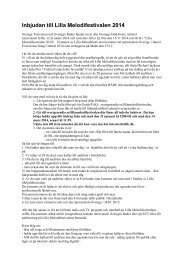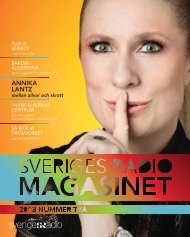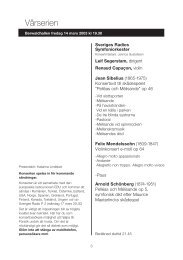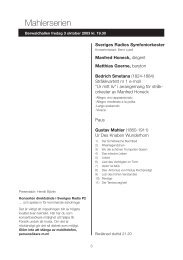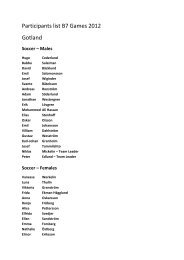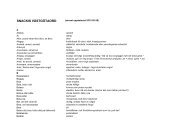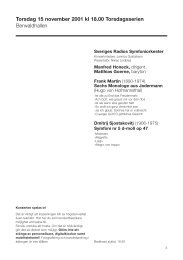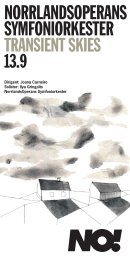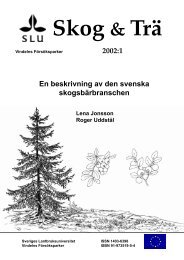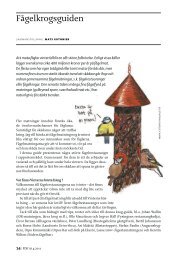SEMF 2013 Festivalprogram (pdf) - Sveriges Radio
SEMF 2013 Festivalprogram (pdf) - Sveriges Radio
SEMF 2013 Festivalprogram (pdf) - Sveriges Radio
You also want an ePaper? Increase the reach of your titles
YUMPU automatically turns print PDFs into web optimized ePapers that Google loves.
Tisdag 4 juni<br />
Tuesday 4 June<br />
Onsdag 5 juni<br />
Wednesday 5 June<br />
Torsdag 6 juni<br />
Thursday 6 June<br />
artemandoline, foto: hanno meier<br />
klanger. Barockens musiker var nyfikna på de mest subtila ljud,<br />
bland annat mandolinens, och de strävade efter estetisk förfining.<br />
Det är i denna mening som man bör låna sitt uppmärksamma och<br />
omdömesgilla öra till denna konsert. Mandolinens ädla ljud har<br />
lovordats av människor i alla tider och kulturer. 1700-talet är<br />
inget undantag, och vad kan vara mer naturligt än att i och med<br />
återupptäckten av detta instrument kombinera några orättvist<br />
förbisedda kompositörer från denna tid med några av de mest<br />
välkända? Knäppinstrument upplever en renässans, och barockmandolinen<br />
har fått allt fler beundrare under de senaste åren. Ett<br />
fint exempel på en cirkel som slutits!<br />
The 17th century was a genuine golden age for the mandolin – as<br />
the many compositions from that period will testify. Its sound and<br />
timbre is an integral part of the musical landscape of the baroque.<br />
Be ginning in Naples in the second half of the 18th century, the<br />
mandolin’s popularity spread rapidly thoughout Italy and Europe. The<br />
Italian virtuosi who chose Paris, the artistic capital of the 1760s,<br />
as their sphere of activity, found great favour in its high society. The<br />
mandolin became the instrument of preference in the Parisian salons.<br />
Numerous sonatas and concertos were printed by Paris and London<br />
music publishers.<br />
The Baroque era, complex and multiple, explored new means of<br />
expression and, first and foremost, new timbres. The curiosity of the<br />
Baroque musician for the subtlest sounds, among them that of the<br />
mandolin, went in the direction of a quest for extreme aesthetic refinement.<br />
It is in this sense that one should lend an attentive and discerning<br />
ear to this concert. The noble sound of the mandolin has been praised by<br />
people of all times and cultures. The eighteenth century is no exception<br />
to this rule, and, in the rediscovery of this instrument, what could be<br />
more natural than to combine some unjustly neglected composers of<br />
that era with some of the best-known? Plucked string instruments are<br />
enjoying a renaissance, and the baroque mandolin has won increasing<br />
amounts of admirers in recent years. A fine example of things coming<br />
full circle.<br />
Juan Carlos Muñoz, barockmandolin • baroque mandolin<br />
Mari Fe Pavón, barockmandolin • baroque mandolin<br />
Manuel Muñoz, barockgitarr • baroque guitar<br />
Alla Tolkacheva, barockmandolin och mandola •<br />
baroque mandolin and mandola<br />
Jean-Daniel Haro, viola da gamba • viol<br />
Jean-christophe leclère, cembalo • harpsichord<br />
30



